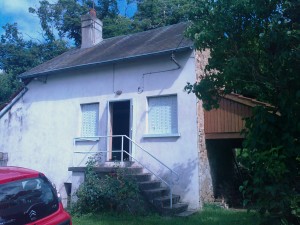A shorter version of this post was first published on Blogcritics
If I’d been asked when feudalism ended in Europe I’d probably have said around the 17th century or so, at least that was until I read Thin Paths by Julia Blackburn, which tells the story of her first years living in an Italian mountain village in Liguria, near the French border in the 1990s.
It contains a compelling, shocking story of the messadri (“half-people”), who until after the Second World War “belonged to a padrone who was their master and they had to give him half of everything they produced, down to the last kilo of chestnuts, the last egg or cabbage”.
Thin Paths might at first glance look like it belongs in the Year in Provence category – foreigner goes to live in culturally different place and writes an account of the odd doings of the “natives”, but it’s a long way from that – deeply sensitive to the lives of the community she’s moved into, compelling in its detailed account of the natural landscape, and emotionally gripping in its tales of tragedy and loss. Blackburn is at the centre of the story, but she doesn’t dominate – this is the story of the place, and her relationship with it, in that order.
A lot of the tales she gradually hears from the locals are about the war, the violence, the pain, and she allows them to hint at, without probing deeply, the still unspoken events that resonate today. But it was Adriana’s story of being a messadri, and her story of her father’s life, that really got to me:
“Adriana says that she can’t have been more than five years old when her father explained what it meant to be half-people. She had asked him why he always gave their food away, even though they had so little for themselves. ‘We are nothing and we own nothing,’ he told her. ‘We don’t own the walls of the houses we have built, or the land that we work on.’ She remembered that he was upset by his own words and she tried to argue with him, saying she was not half a person and he must have made a mistake – and that made him angry – even though he was a man who rarely showed anger.” (p.71)
It’s interesting when you think back to my broadly feudal times to transpose that scene. I’m reading now David Rollinson’s A Commonwealth of the People: Popular Politics and England’s Long Social Revolution, 1066-1649, which makes the case for a long history of resistance from the “common people” to the feudal system, and it’s not hard to imagine Adriana’s scene transferred back through the centuries.
read more


 About
About